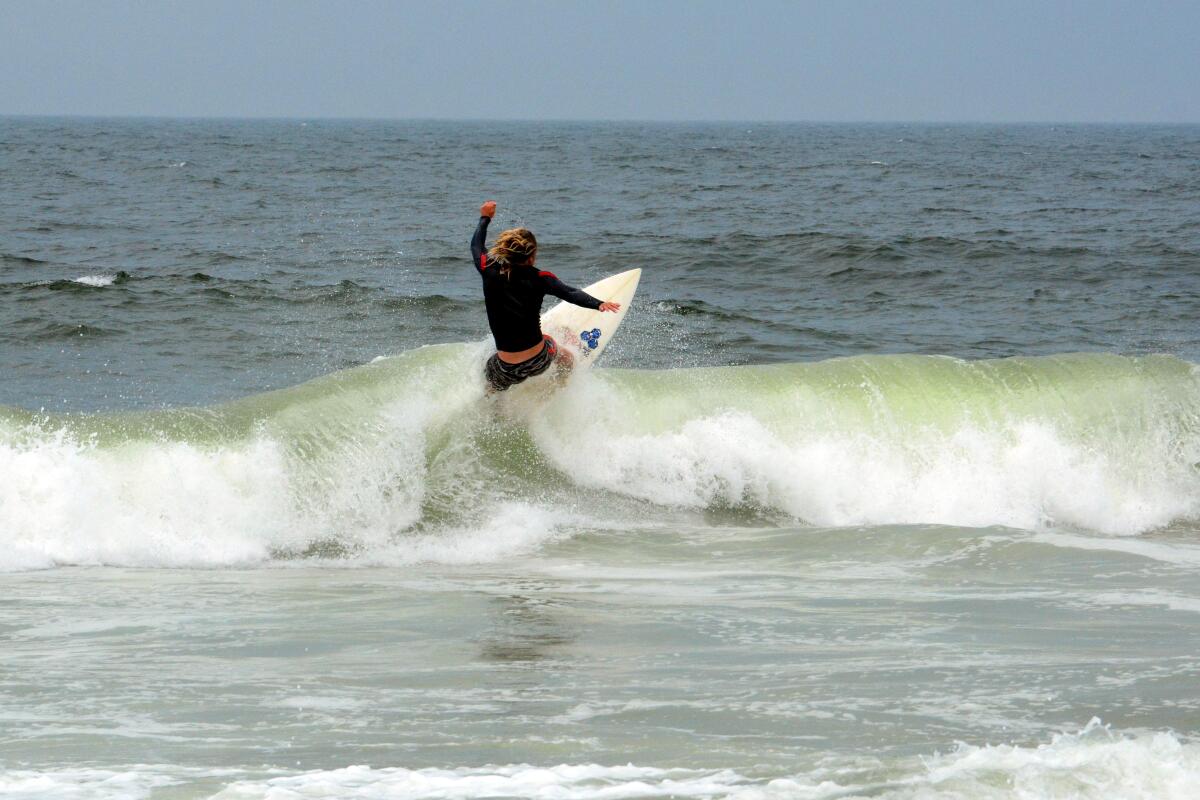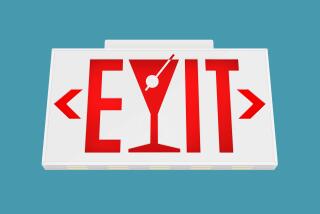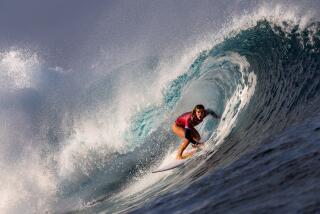Op-Ed: How surfing helped one recovering addict break the cycle

I recently spent the night on the living room couch. Not on account of any domestic estrangement. The disturbance was distant and impersonal: a tropical storm sending waves to the New Jersey coastline. Midsize but powerful, the swell was forecast to peak early the next morning, when the winds would be light and favorable. I was sleeping on the couch so I could slip out of the house without waking anyone and race away before dawn to join the feast.
The infrequency and ephemerality of good waves, especially on the East Coast, breed tension and anxiety, a surf-specific sort of FOMO (though surfers will tell you they invented the fear of missing out). Monkishly alone on my narrow couch-bed, I found it hard to drift off. I had packed the car with my board and wetsuit and towels, made the next day’s breakfast and lunch and carefully sealed it all away in tins, filled bottles with water and coffee. But would the alarm go off? Would the car start? And assuming I made it to the beach on time, with all the right gear, was I fit enough at 61 to surf well in confining head-to-toe neoprene in the still-frigid ocean? Or if not “well,” then … competently, without embarrassing myself?
More deeply: Why was I still doing this, painstakingly organizing a day of my life around the arrival of waves? I began surfing when I was 10. The adrenalized excitement and anticipation feel no less intense now than they did in 1970. I was bedding down on the couch, but I would have gladly slept on the beach for this storm swell; I would have slept standing on one leg.
“Addiction” is a term that is used so promiscuously as to be almost meaningless. We pathologize pastimes for the sake of wit or as a disarming way to inform the world of enthusiasm for something dry and demanding. “I’m addicted to Latin grammar.” People don’t merely follow current events closely; they’re “news junkies.”
Surfers are certainly guilty of addiction hyperbole. Ask one to tell you about her first wave and she will almost inevitably conclude, “And I was hooked!” Then again, the neurochemical signature of learning to surf is essentially that of acquiring an addiction, the main elements of which are novelty, risk and intensity. The utter newness of being on a board in the ocean, the all-hands-on-deck alertness brought about by the ever-present danger of drowning or injury, combined with surfing’s aerobic demands, flood the body with serotonin and endorphins, hormones that spark the heady “runner’s high.” Meanwhile, the incomparable thrill of the ride itself calls forth bursts of dopamine, the neurotransmitter of drive and wanting that plays a central role in habit formation, learning and addiction.
Yet surfing bears little resemblance to real addiction — “real” measured according to the destructive effect on the lives of the addict and others. That definition can include the new and ever-expanding class of “behavioral addictions” — to sex, shopping, gambling, junk food, exercise, smartphones, internet porn and internet use in general. Any pleasurable activity, however familiar or traditional, is seen as a risk for compulsive misuse. None of which should eclipse the life-and-death stakes of substance abuse. The nation’s annual death toll by drug overdose has been around 70,000; alcohol-related deaths tally 95,000.
I became addicted to alcohol and drugs in my mid-20s. I was a broke, vaguely angry, vaguely depressive young poet. To drink and drug to excess seemed almost a requirement, a mark of authenticity. There was addiction in my immediate family, along with mental illness and suicide. No matter. I had quit surfing years earlier, on the threshold of college, and never imagined I would return to it. But it later proved essential to my recovery.
I subscribe to the school of thought that we are always held captive in one or another matrix, that it’s a question of choosing not freedom but the most suitable, life-affirming bondage. When an addiction is renounced and abandoned, it must be supplanted by something comparably powerful and charismatic — some combination of body work and spiritual practice, ideally in wilderness, which elicits awe, the opposite of addiction’s narrow self-obsession — surfing, in my case. Nothing compares to the exalting natural beauty and multisensory richness of the ocean wilderness, the arena and medium of wave riding.
Yet as a bond with addictive power, surfing is hardly the serene, blandly wholesome lifestyle portrayed in popular media. What I felt, streaking along the highway on the morning of that storm swell, was a sense of heedlessness and impulsivity that reminds me of nothing so much as my drug days — what addiction researchers call “now appeal,” an inability to defer.
Finally at the beach, in a nod to surfing’s rebellious yesteryear, I climbed over a gate barring entrance and hustled onto the sand. And realized I’d forgotten to put on sunscreen. Back to the car. Smeared zinc on my face. Dashed to the beach again, only to pluck for a small eternity with my right neoprene-mittened hand at the cuff of my left neoprene mitten to make it lie down properly — before entering the water at last like an overheated horse plunging into a river.
This was at Casino Pier, a misnomer since its destruction by Hurricane Sandy. The classic spidery roller coaster famously photographed standing half-submerged by Sandy’s foamy storm surge had been replaced by a smaller one, but it and the arcades had the mirage-like, irrelevant cast of everything seen from the lineup on a day of good waves.
My 30-something friend Chris grew up surfing here, in awe of a crew of older surfers who maintained a strict pecking order. Where were they now? With one or two exceptions, they had all quit surfing, he said.
I understood. That day I flubbed a solid peak in plain view of a number of idly watching locals and surfaced to find one of them looking away in disgust. It is humbling, occasionally humiliating, to surf deep into middle age and beyond, to come off as a novice by dint of slowing reflexes and weakening core strength and no longer living at the beach. But risk has always been part of surfing’s addictive cocktail.
Before the day was out, I lucked into the longest barrel I’d had in years. Someone paddling out lingered to watch me riding along inside the wave for an improbable, exhilarating stretch. The barrel did not cancel out the blunder, but it did bring home why I remain a willing captive of this world.
Thad Ziolkowski is the author of “The Drop: How the Most Addictive Sport Can Help Us Understand Addiction and Recovery.”
More to Read
A cure for the common opinion
Get thought-provoking perspectives with our weekly newsletter.
You may occasionally receive promotional content from the Los Angeles Times.










